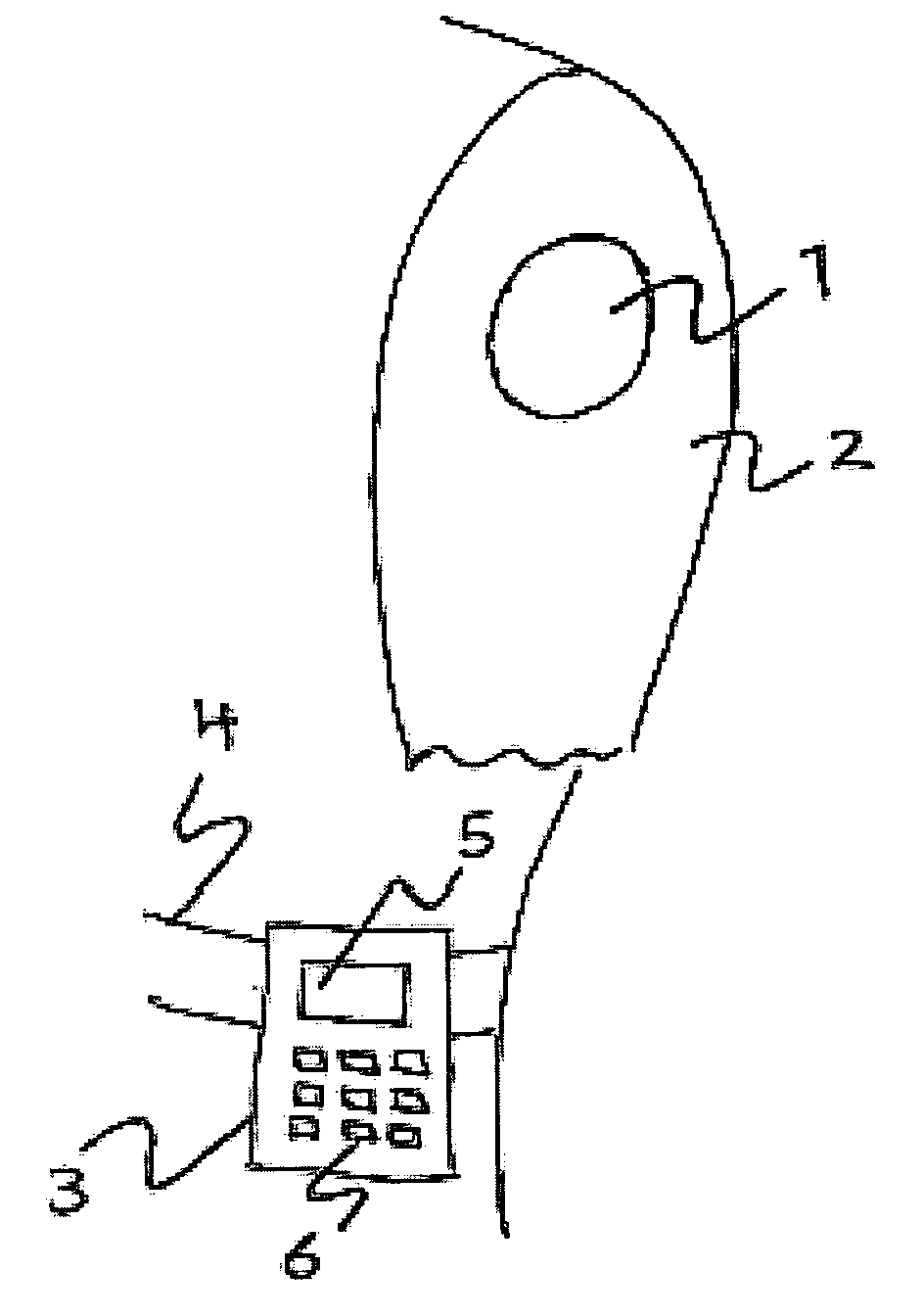Sensor configuration
a biosensor and configuration technology, applied in the field of sensor configuration, can solve the problems of serious skin damage, limited use, and limited use of biosensors of this type, and achieve the effect of reducing the risk of environmental “noise interference”
- Summary
- Abstract
- Description
- Claims
- Application Information
AI Technical Summary
Benefits of technology
Problems solved by technology
Method used
Image
Examples
Embodiment Construction
[0070] There is illustrated in FIG. 1 a human wearable monitoring system. This may be suitable, for example, for continuously monitoring the glucose level of a user suffering from diabetes. The system comprises two main components: a disposable sensor 1 in the form of a patch that is affixed to a user's skin, e.g. the arm 2, and a controller 3 which, in the example show, is attached to the user's belt 4. The controller 3 comprises a user interface including a liquid crystal display (LCD) 5 and a keypad 6.
[0071]FIG. 2 shows a cross-sectional view of the sensor patch 1, affixed to the user's skin. The patch 1 comprises a flexible carrier 7 which may be of a plastics or fabric material, or of a metal foil. The underside of the carrier may be coated with an adhesive to allow the patch to be fixed to the skin, if the carrier is itself not sufficiently “sticky”. Projecting from the underside of the patch is an array, e.g. 100, of micro-needles 8. These are typically 1-1000 micrometers in...
PUM
 Login to View More
Login to View More Abstract
Description
Claims
Application Information
 Login to View More
Login to View More - R&D
- Intellectual Property
- Life Sciences
- Materials
- Tech Scout
- Unparalleled Data Quality
- Higher Quality Content
- 60% Fewer Hallucinations
Browse by: Latest US Patents, China's latest patents, Technical Efficacy Thesaurus, Application Domain, Technology Topic, Popular Technical Reports.
© 2025 PatSnap. All rights reserved.Legal|Privacy policy|Modern Slavery Act Transparency Statement|Sitemap|About US| Contact US: help@patsnap.com



